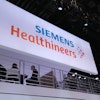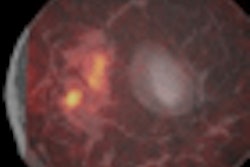Dear Molecular Imaging Insider,
This issue of the Molecular Imaging Insider features research from the University of Munich in Germany, where a group has found that PET/CT performed on patients being treated for cancer could also be used to detect signs of future cardiovascular events.
The researchers determined that FDG uptake in major arteries is the "strongest predictor of a subsequent vascular event," and they identified two measures, in particular, that could be used to determine which patients are at risk. Find out what they are by clicking here.
Also in this edition, associate editor Cynthia E. Keen reports on how radiation dose for whole-body pediatric PET/CT exams can be cut in half with new low-dose protocols customized to the weight of children. The study from the University of Washington indicates that the lower settings can reduce radiation dose by at least half compared to conventional PET/CT exams, which, in turn, would dramatically lower the risk of developing cancer later in the child's life.
SPECT/CT is helping orthopedic surgeons and radiologists identify multiple arthritic joints in the feet and ankles and localize degenerative joint disease, according to a study from Switzerland. Researchers say the modality also can help surgeons and radiologists with limited clinical experience to detect the arthritic joints in small, complex anatomic sites.
After the passage of the Deficit Reduction Act of 2005 and increases in facility costs, radiology practices in the U.S. have been forced to look for creative ways to increase patient volume. Contributing writer Kevin M. Reilly reports on how accuracy, turnaround time, and follow-up are all important elements that can make or break a practice when reading a patient's PET/CT images.
Those items are just a few of the informative stories you'll find on a daily basis in the Molecular Imaging Digital Community. Be sure to keep pace with the latest developments in research and news in the coming days and weeks.




















